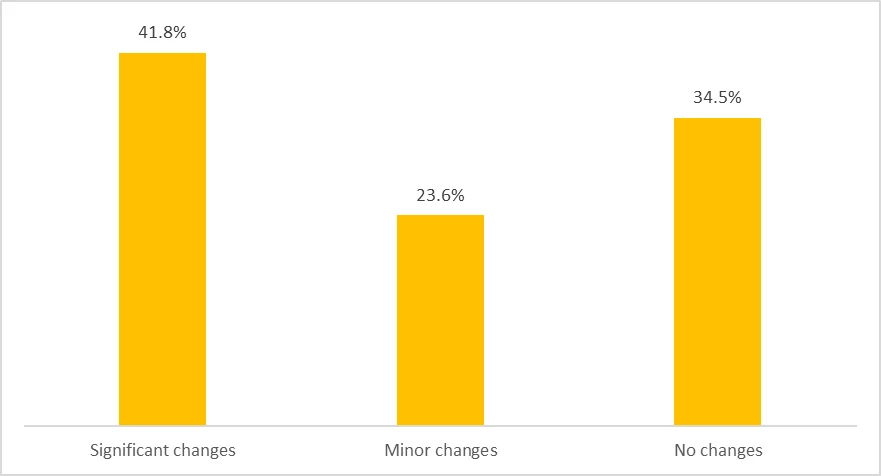 South Korea. April 11, 2020 A walk-through screening clinic installed in Incheon. Photo: Rapture700/Shutterstock
South Korea. April 11, 2020 A walk-through screening clinic installed in Incheon. Photo: Rapture700/Shutterstock
The Republic of Korea was one of the first countries to respond to COVID-19, which is now a major global crisis with deep health, economic, and social impacts across the world. While the long-term trajectory of the pandemic is uncertain, Korea’s initial response has been effective in slowing the spread of COVID-19.
Policy makers and practitioners are asking how Korea has been able to achieve this encouraging outcome. To learn from Korea’s experience, the Global Delivery Initiative (GDI) has developed a new case study – The Republic of Korea’s First 70 Days of Responding to the COVID-19 Outbreak – which closely examines how Korea put its response into action. The case study finds that implementation mattered. In other words, it was not just what Korean policymakers and practitioners did, but how they did it that made the response effective.
The GDI is a partnership of more than 50 development organizations focused on collecting and sharing operational knowledge and lessons to better understand what works in implementation. GDI’s case studies dive into implementation processes to unpack the “why” and “how” of successful (and unsuccessful) development interventions. They identify pain points and critical junctures in the implementation processes, as well as adaptations and other steps taken by policy makers and practitioners to course correct and address delivery challenges. Ultimately, these analytical narratives aim to surface lessons from the implementation of development interventions and to make tacit knowledge more accessible.
Korea identified its first positive case on January 20, 2020. Since peaking at 813 cases on February 29, the number of new cases has declined. Sunday, April 19 saw a new low of 8 new cases reported country wide.
Figure 1. COVID-19 Cases in Republic of Korea
Source: KCDC
This case study closely examines the implementation of Korea’s response, including efforts to prevent transmission, develop and deploy tests, trace the virus, and treat patients, as well as the role played by Korea's preparations for a novel disease outbreak following the 2015 MERS outbreak. Like many countries, the basic elements Korea deployed included diagnostic testing, tracing contacts, isolating confirmed and suspected cases, providing treatment, and encouraging social distancing. However, how Korea implemented these measures has distinguished its approach and contributed to its effectiveness.
While some aspects of Korea's approach may not be directly transferable due to contextual differences, such as culture and institutions, we believe that the country’s implementation experiences offer suggestive lessons that could inform other countries’ responses to the pandemic. A few takeaways emerge from the case study:
Acting swiftly: Korea’s leadership moved quickly before the situation became a crisis. On January 27, only one week after Korea’s first case was diagnosed, the government called on the country’s leading biotech companies to develop testing kits for mass production, and they approved production just over a week later. The widespread availability of testing has been a key factor in containing the spread of the disease.
Adapting to changing conditions: The government’s ability to adapt its approach in real time was critical to its effective response. This included mobilizing human resources to the areas hardest hit by the outbreak as well as scaling innovative approaches, such as drive-through testing centers. Soon after this model was piloted in a few locations, the government announced a standard operating protocol, and by April 1, about 80 drive-through centers were in operation. This significantly increased the country’s capacity to conduct tests quickly, while reducing the risk of spreading the infection.
Using ICT: Korea quickly developed and deployed technology solutions to track cases. These tools have included mobile phone applications to collect data from potential patients and to ensure that individuals are observing isolation requirements. The government is also using video surveillance recordings and mobile phone GPS data to verify patients’ movement histories and identify potential contacts who have been exposed. Although data sharing has been essential to tracking cases, it has also raised some privacy concerns. Local governments are starting to take mitigation measures to address this issue, for example erasing movement histories of recovered patients to prevent the misuse of information.
Transparent Communication: The Korean government faced widespread criticism for its lack of transparent communication during the 2015 MERS outbreak. Following lessons from this experience, the government has made it easy for citizens to access up-to-date and accurate information including through twice-a-day press briefings, text messages, websites, and mobile applications. Those efforts have helped to counter widespread panic and to ensure public cooperation.
As the situation evolves, the Global Delivery Initiative will continue to produce additional case studies tracing the implementation processes of responses to COVID-19.




Join the Conversation